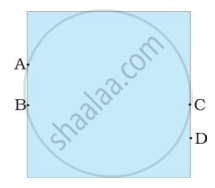Advertisements
Advertisements
प्रश्न
A man exerts same pressure on the ground whether he is standing or he is lying.
विकल्प
True
False
उत्तर
False.
A man exerts different pressure on the ground whether he is standing or he is lying.
APPEARS IN
संबंधित प्रश्न
Two vessels have the same base area but different shapes. The first vessel takes twice the volume of water that the second vessel requires to fill up to a particular common height. Is the force exerted by the water on the base of the vessel the same in the two cases? If so, why do the vessels filled with water to that same height give different readings on a weighing scale?
Pressure is the thrust acting on a surface of ........... area.
Water flows through a horizontal tube of variable cross section. The area of cross section at A and B are 4 mm2 and 2 mm2 respectively. If 1 cc of water enters per second through A, find (a) the speed of water at A, (b) the speed of water at B and (c) the pressure difference PA − PB.


A water tank has four taps fixed at points A,B,C and D as shown in figure. The water will flow out at the same pressure from taps at
Pressure can be increased by decreasing the force.
Pressure is directly proportional to the area of contact.
Assertion: The pressure at the bottom of the sea is lesser than that near the surface.
Reason: The pressure exerted by a liquid depends upon the depth of the liquid and density of the liquid.
What is the SI unit of pressure?
Iceberg floats in water with part of it submerged. What is the fraction of the volume of iceberg submerged if the density of ice is ρi = 0.917 g cm–3?
A vessel filled with water is kept on a weighing pan and the scale adjusted to zero. A block of mass M and density ρ is suspended by a massless spring of spring constant k. This block is submerged inside into the water in the vessel. What is the reading of the scale?
